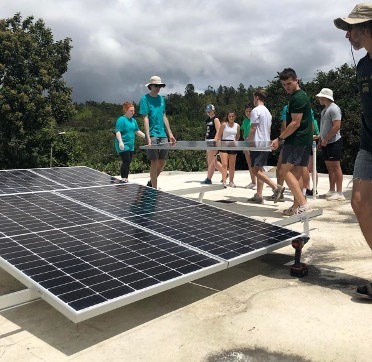PRendio: Assessing the Feasibility of Solar Energy as a means of Improving Electricity Reliability in Puerto Rico
- Student
- Melanie Torres Rojer
- College(s)
- College of Engineering
- Faculty Advisor
- Ginger Sigmon
- Class Year
- 2022
Abstract

Electricity in Puerto Rico is provided by the generation company Puerto Rico Electric Power Authority (PREPA), now LUMA Energy, the private company that oversees electricity transmission and distribution across the island. LUMA Energy fails to reliably supply electricity to clients across Puerto Rico as its system continues to degrade over the years. This deterioration has been exacerbated by natural disasters, causing frequent blackouts and long electricity recovery periods. While Puerto Rico has some renewable resources, PREPA supplies most of its electricity from imported fossil fuels to meet the island’s electricity demand. This project focused on assessing the current state of electricity reliability on the island. The first step of the project was researching the status of electricity reliability, meaning addressing grid weaknesses, coverage, and resilience, particularly against natural disasters. Additionally, I determined the location of current power plants and was able to draw its connection to unreliable electricity. Secondly, I determined the key historical factors that led to unreliable electricity in Puerto Rico. To complete this objective, I established what have been the leading factors attributing to the island’s electricity crisis and worked on relating the island’s reliance on exported fossil fuels to the production of electricity. The third and final step was evaluating the feasibility of solar energy solutions to address electricity unreliability. I estimated the cost of powering the island with solar panels and compared such price to that of rebuilding the current electric grid. Based on my research findings, I was able to conclude that rooftop solar exceeds the capacity for current residential electricity in Puerto Rico. In other words, an average household on the island would be able to produce their own decentralized electricity through the installation of 13 solar panels forming part of a 4 kW system. While the government’s ten-year plan to modernize the current electric grid would require roughly $20 billion, the cost for residential rooftop solar applications throughout the island would be closer to $15 billion. Moreover, the proposed system could benefit from batteries for storage and connection to microgrids since this would further increase electricity reliance by having electricity backups independently from the main grid. Tax incentives would help cost these installations through the Investment Tax Credit (ITC) initiative, lowering the price of the system. Due to the feasibility of rooftop solar accompanied by storage and microgrid applications, my proposed solution provides hope to the Puerto Rican community to not only improve electricity reliability so that they are prepared for natural disasters but also gain energy independence and sovereignty.
Introduction
Electricity in Puerto Rico depends on electric utility service companies, the government-owned PREPA, and the private company, LUMA Energy, that have a monopoly over the operation and maintenance of electric power generation, transmission, and distribution systems on the island. While their purpose has been to provide reliable electricity to all residents, the reality is that these companies fail to meet electricity needs across the island due to degrading systems. Recovery of electricity after natural disasters is especially difficult, having taken nearly a year for the island to restore power after Hurricane Maria, one of the strongest storms to impact Puerto Rico. This project investigated the feasibility of an energy transition from fossil fuels to renewables, particularly solar energy, as a solution to the island’s energy crisis. Given Puerto Rico’s electricity background, the use of solar energy as a viable and promising alternative was explored to determine how this idea addresses the supply of electricity across the island and resilience against natural disasters.